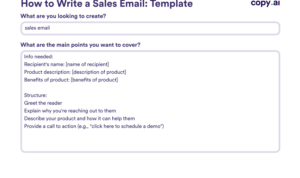Designing Interactive Content sets the stage for a dynamic exploration of engaging digital experiences, blending creativity and innovation seamlessly. Get ready to dive into a world where interaction is key, and creativity knows no bounds.
From quizzes to games, this topic covers it all, shedding light on the evolution of content creation in the digital age.
Introduction to Designing Interactive Content
Designing interactive content is all about creating engaging digital experiences that users can actively participate in. Unlike traditional static content, interactive content allows users to interact with the material, making it more dynamic and personalized. This type of content can range from quizzes and polls to games and calculators, providing a more immersive and engaging experience for the audience.
The Importance of Interactive Content
Interactive content plays a crucial role in capturing and maintaining the audience’s attention. By involving users in the content creation process, interactive elements can increase engagement levels and make the material more memorable. This, in turn, can lead to higher conversion rates, increased brand loyalty, and a more enjoyable user experience overall.
Differences from Traditional Static Content
Traditional static content typically consists of text, images, and videos that users can only passively consume. On the other hand, interactive content requires active participation from the user, whether it’s clicking on buttons, answering questions, or navigating through a virtual environment. This interactivity not only keeps users engaged but also allows for more personalized experiences tailored to individual preferences.
Types of Interactive Content
Interactive content comes in various forms, each serving a unique purpose and engaging the audience in different ways. Let’s explore some of the common types of interactive content and analyze their effectiveness.
Quizzes
Quizzes are interactive content pieces that allow users to test their knowledge on a specific topic or subject. They are engaging and provide instant feedback, making them popular for educational purposes and lead generation.
Polls
Polls are interactive surveys where users can vote on a particular question or topic. They are great for gathering opinions, increasing engagement, and understanding the preferences of your audience.
Calculators
Calculators are interactive tools that help users perform calculations or make decisions based on input. They are practical for industries like finance, real estate, and e-commerce, providing value to users and encouraging them to interact with the content.
Games
Games are interactive content pieces designed for entertainment purposes. They can range from simple puzzles to complex simulations, enhancing user engagement and creating a memorable experience.
Virtual Tours
Virtual tours allow users to explore a location or property in a 360-degree immersive experience. They are commonly used in real estate, tourism, and education industries to provide a realistic preview and engage users visually.
Interactive Infographics
Interactive infographics combine data visualization with interactive elements like animations, hover effects, and clickable features. They make complex information more digestible and engaging for the audience.
Interactive Videos
Interactive videos allow viewers to make choices that impact the storyline or outcome of the video. They provide a personalized viewing experience and increase user engagement through active participation.
Strategies for Designing Interactive Content

Creating engaging interactive content requires careful planning and execution. Here are some tips to help you design content that drives user interaction and enhances user experience.
Role of User Experience (UX) Design, Designing Interactive Content
User experience (UX) design plays a crucial role in the development of interactive content. It involves understanding the needs and preferences of the target audience, designing intuitive interfaces, and ensuring a seamless user journey. By focusing on UX design, you can create interactive content that is user-friendly, engaging, and effective.
Best Practices for Driving User Interaction
– Understand your target audience: Conduct research to gain insights into the preferences, behavior, and needs of your target audience.
– Set clear objectives: Define clear goals for your interactive content to ensure that it aligns with your overall strategy.
– Keep it simple: Avoid clutter and unnecessary elements that can distract users from engaging with your content.
– Use visuals and multimedia: Incorporate images, videos, and animations to make your content visually appealing and interactive.
– Provide feedback: Offer feedback to users to acknowledge their actions and guide them through the interactive experience.
– Test and iterate: Conduct user testing to gather feedback and make improvements to enhance the user experience.
By following these best practices and focusing on user experience design, you can create interactive content that captures the attention of your audience and drives meaningful user interaction.
Tools and Platforms for Building Interactive Content: Designing Interactive Content

Creating interactive content requires the use of specialized tools and platforms to bring ideas to life. Let’s explore some popular options and their features for developing engaging interactive experiences.
1. Adobe Animate
Adobe Animate is a powerful tool for creating interactive content such as animations, games, and interactive presentations. It offers features like timeline-based animation, support for HTML5 Canvas, and integration with other Adobe products like Photoshop and Illustrator. Pros include a user-friendly interface and extensive animation capabilities. However, the learning curve can be steep for beginners.
2. Unity
Unity is a popular platform for building interactive 2D and 3D content, especially for games and simulations. It provides a wide range of tools for game development, including physics engines, scripting capabilities, and asset store integration. Pros of Unity include cross-platform compatibility and a large community for support. However, it can be resource-intensive and complex for beginners.
3. H5P
H5P is an open-source platform for creating interactive content like quizzes, presentations, and interactive videos. It offers a wide range of content types and templates, making it easy to create engaging experiences. Pros include ease of use, compatibility with various Learning Management Systems (LMS), and the ability to track user interactions. However, customization options may be limited compared to other tools.
4. Tumult Hype
Tumult Hype is a tool for creating interactive web content and animations using HTML5, CSS3, and JavaScript. It features a timeline-based interface, support for responsive design, and the ability to export projects as HTML files. Pros include a straightforward interface and seamless integration with web technologies. However, advanced features may require some coding knowledge.
These tools and platforms offer a range of features and capabilities for building interactive content tailored to different needs and skill levels. Consider the pros and cons of each option to choose the best fit for your interactive content projects.





